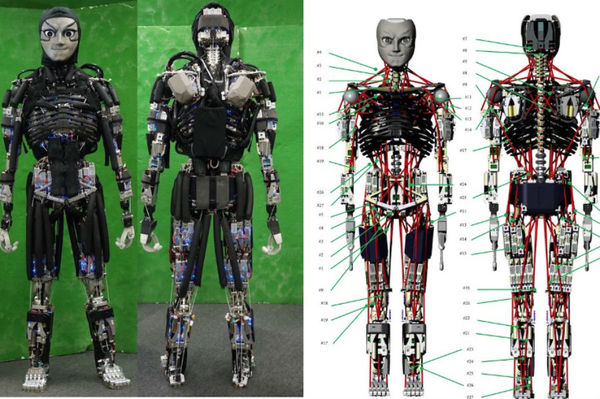Scientists have found a new way to keep robots cool and maintain their efficiency.
Humanoid robots have come a long way in terms of construction and functionality. Today’s robots can do a lot of things in a very similar way a human does.
The latest advancement to make your eyes go wide comes from researchers at the University of Tokyo’s JSK lab. The team’s Kengoro robot, standing at roughly 5.5 feet tall and weighing 123 pounds isn’t just physically strong; it’s capable of hitting the floor and doing pushups.
To pull off this feat, Kengoro contains 108 motors that work together to balance and exert force throughout the frame. All of this activity generates heat which, in traditional humanoid systems, would have to be ferried away by some bulky cooling system involving radiators or fans. Instead, the team turned to the human body for inspiration, creating an innovative internal cooling system that effectively allows the robot to sweat.
The researchers recently presented their solution at a robotics conference in South Korea under the title “Skeletal Structure with Artificial Perspiration for Cooling by Latent Heat for Musculoskeletal Humanoid Kengoro.”
To create a frame that could allow for excess water without creating a giant puddle, the team utilized a special process called laster sintering. This technology, not unlike 3-D printing, allows the researchers to build each piece Kengoro’s aluminum skeleton layer by layer and with varying degrees of permeability. With these interlocking channels in place, water can passively flow from one area of low permeability, gather heat near the various motors, and then transfer that energy to an area of high permeability for evaporation.
“Usually the frame of a robot is only used to support forces,” team leader Toyotaka Kozuki told IEEE Spectrum. “Our concept was adding more functions to the frame, using it to transfer water, release heat, and at the same time support forces.”
According to the researchers, Kengoro’s innovative cooling system enables it to efficiently run for half a day on a cup of deionized water. It also allows for sustained pushup marathons of 11 minutes straight without overheating. While not as effective as a built-in radiator with active cooling, it reduces the amount of bulk often present in humanoid designs.
The next step is to integrate the cooling technology into future humanoids and improve the efficiency further.
After that, we imagine it’s only a matter of time before they get sick of doing pushups and put in motion plans to take over the world.













